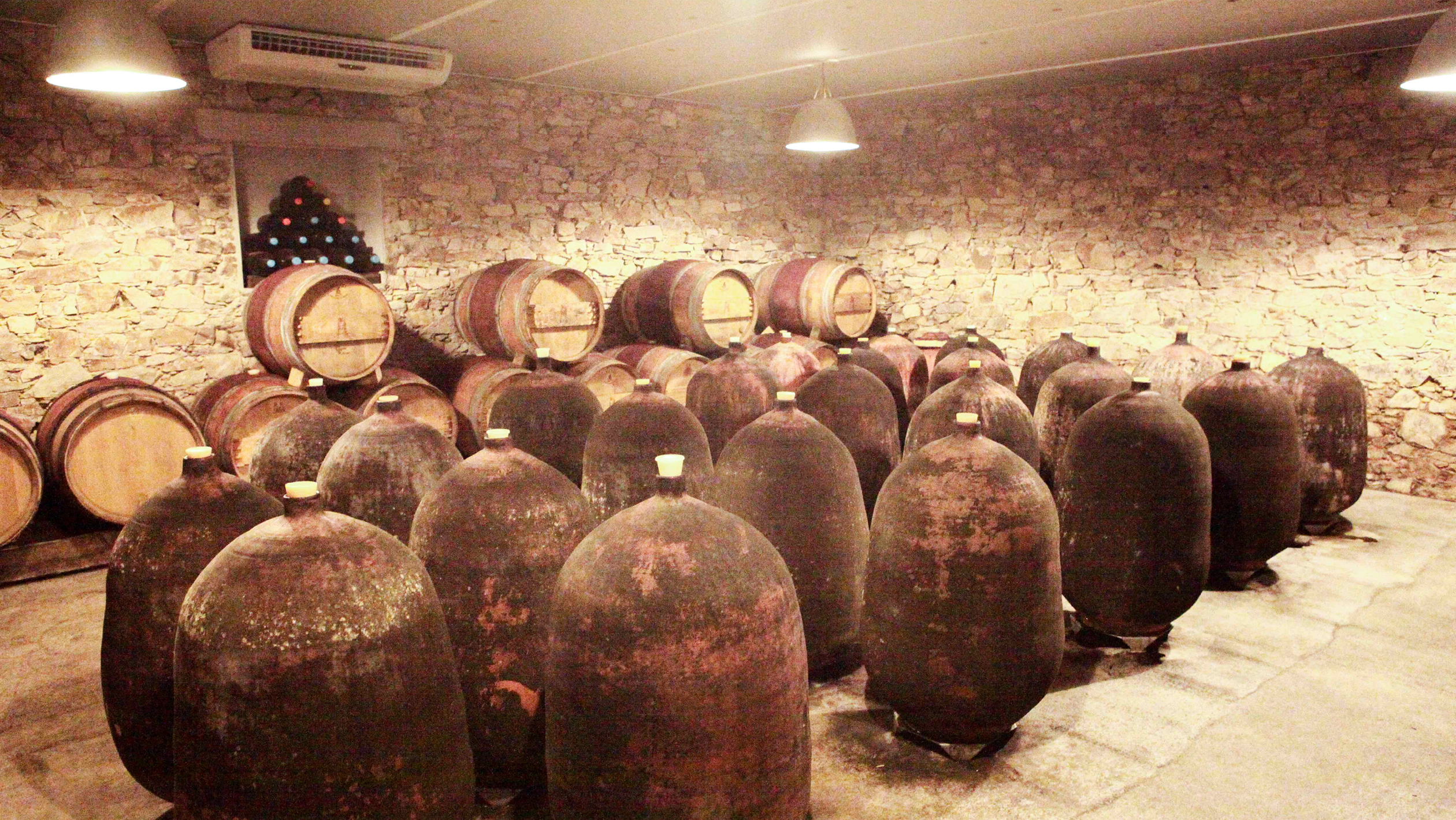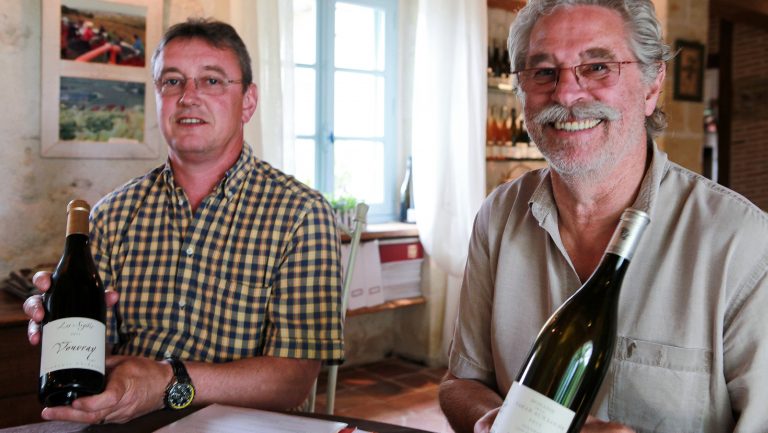People attending natural wine tasting events like the Real Wine Fair or RAW in London or Renaissance tastings in France, and those who frequent natural wine bars may be noticing that more and more French natural wine producers are opting to dispense with the restrictions of the Appellation d’Origine Côntrolée (AOC) and are putting their wines in the Vin de France category instead.
The VdF category was introduced in 2010. It is a national classification that allows French producers to include information on the label highlighting the vintage and the grapes used but not the location in France where the wine was made. Such details had been banned from the Vin de Table (VdT) designation. The VdF designation also allows the blending of grapes from different parts of France, a practice that has several advantages.
Flexibility Is a Highlight of VdF
A winemaker using the VdF classification is permitted to blend in grapes from a cooler part of France to add freshness, while getting richness and concentration from grapes grown in the hotter south of France. Under the VdF classification, François Lurton is blending grapes from the cool Gers area in the southwest of France with grapes from vineyards in the hotter Languedoc and Tarn regions for his Les Fumées Blanches Sauvignon Blanc.

Don’t miss the latest drinks industry news and insights. Sign up for our award-winning newsletters and get insider intel, resources, and trends delivered to your inbox every week.
The VdF’s flexible rules also allow producers badly hit by spring frosts or hail, say, to bring in grapes or must from other parts of France and vinify them at their own facilities along with what remains of their depleted crops—or to produce another wine entirely.
Another incentive that is particularly appealing to a number of natural wine producers is that the category gives them a new freedom to experiment. Fred Niger Van Herck of the Domaine de l’Ecu in the Loire Valley’s Pays Nantais area is a natural winemaker who is taking advantage of this flexibility. Not only is he experimenting with long macerations in amphorae but he has used the VdF classification in vintages when his vineyards have been badly hit by frost or mildew, or a combination of the two.

The National Impact of the New Category
Statistics from the French government for the difficult 2016 vintage show that production of VdF (2.5 million hectoliters) is much smaller than that of both AOC (21 million hectoliters) and Indication Géographique Protégée, or IGP, (12.8 million hectoliters). The average annual production of VdF between 2009 and 2013 was 3.8 million hectoliters.
The relaxed rules and the ability to include a little more information on the VdF label has encouraged some producers to opt for VdF for all or part of their production.
Some producers have completely forsaken AOC, including Marc Pesnot of Domaine de la Sénéchalière within the Muscadet Sèvre et Maine zone, Mark Angeli of Domaine de la Sansonniére, Olivier Cousin of Domaine Cousin-Leduc, and Richard Leroy of Domaine Richard Leroy in Anjou. However, it is much more common to find producers opting for a “mixed economy,” using a range of AOC, IGP, and VdF classifications.
Niger Van Herck’s website lists 12 VdF wines, compared with his five AOC Muscadets. However, in terms of volume, his VdF wines represent only 36 percent of his output compared with his Muscadets, though the percentage of his VdF wine is steadily increasing.
Because of a ban on vinifying Vouvray in neighboring Montlouis, Jacky Blot and François Chidaine have been forced since the 2014 vintage to label their Vouvrays as VdF wines. Both Blot and Chidaine have notable reputations, so this hasn’t impeded their sales, but for them the choice to use the VdF designation is more of a default; they would use the Vouvray appellation if the ban were to be lifted.
The Beaujolais-based Domaine Marcel Lapierre labels its Raisins Gaulois, made from young vines in Morgon and other parts of the Beaujolais, as VdF because the local growers’ organization decided not to allow Vin de Pays (VdP) in Beaujolais. Nearby in Brouilly Jean-Claude Lapalu has two VdF wines: Alma Mater, which is vinified in amphorae, and Eau Forte, while the rest of his wines are designated with the Brouilly, Beaujolais Villages, or Beaujolais appellations.
These examples from individual wineries are some of the more interesting cases illustrating how the VdF designation can be beneficial, but it should be noted that the majority of VdF wines are made up of brands produced by large companies.
VdF Wines in America
The United States approved the VdF designation in November 2012. Because it allows both grape variety and vintage to be listed on the label, the VdF category has demonstrated considerable advantages in the U.S. market over the old Vin de Table classification and has been a positive change.
However, Valérie Pajotin, director of Anivin de France, the French trade organization for VdF, explains that it’s difficult to draw a direct comparison between the two designations because they were created with different objectives. “Vin de Table was only blended wines with no [allowance] to write the grape variety and the vintage on the label,” she says. “We know that grape variety is the number one criterion for consumers, and Vin de France allows producers to give them this information.”
Sales of varietally labeled VdF wines in the U.S. have quadrupled in the last three years and are now nearing 700,000 cases. “We attribute this success to the freedom the designation allows on sourcing, labeling, and winemaking—and best value for money,” Pajotin says. “In the last 12 months, exports grew 14 percent in volume and 16 percent in value versus the previous year.”
Although VdF wines from small natural wine producers have their place in the wine scene in markets like New York, the growth in VdF sales in the U.S. is not being driven by natural wines but by brands of larger companies, such as Kiwi Cuvée and J.P. Chenet from Les Grands Chais de France, La Petite Perrière from Saget La Perrière, Kosmos from Gérard Bertrand, Maison de la Villette from Badet Clément, Le Val from Vinadeis, and Ropiteau Pinot Noir from Ropiteau Frères, part of the Boisset group.
The Future of the AOC
The VdF category is gaining traction, but it’s not taking off everywhere. There is little to no appetite in Bordeaux or Burgundy to adopt VdF across the board in preference to the appellation. There are, however, grapes and wine styles that are not covered by the Bordeaux appellations, and producers will opt for the VdF category for those (although they could also use the IGP classification).
A good example is the Chardonnay VdF wine of Clos Dubreuil, a Grand Cru Saint-Émilion from Benoît Trocard, which could have been an IGP. “Yes, I could have labeled my Chardonnay as IGP,” says Trocard. “However, personally I find Vin de France a better and simpler name than IGP Vin de Pays de l’Atlantique. My marketing is very focused on the packaging, which echoes that of Clos Dubreuil and its grand cru wines, so that the brand is more important than the wine classification. Vin de France can also be read as ‘product of France.’”
While the VdF designation gives producers greater flexibility and more opportunity to experiment—and sales suggest that the category in some areas is on the rise, it’s very unlikely to threaten the dominance of the AOC system, especially in successful appellations like Bordeaux and Burgundy, where it makes strong commercial sense for most producers to sell their wines as AOC rather than VdF. Where VdF has the most potential is in less prestigious appellations, such as Anjou and Touraine in the Loire Valley and Languedoc-Roussillon.

Dispatch
Sign up for our award-winning newsletter
Don’t miss the latest drinks industry news and insights—delivered to your inbox every week.
Jim Budd, who divides his time between London, the Loire Valley, and Lisbon, has been writing about wine since 1988. He has been a contributor to many magazines and blogs at Investdrinks-blog and Les 5 du Vin. Jim is also the former chair of the Circle of Wine Writers, a former editor of Circle Update, and has been regional Loire chair for the Decanter World Wine Awards since 2004. He earned IWC Personality of the Year in 2012 and the 2012 Born Digital Wine Award for the best investigative wine story. Follow him on Twitter and Facebook.






